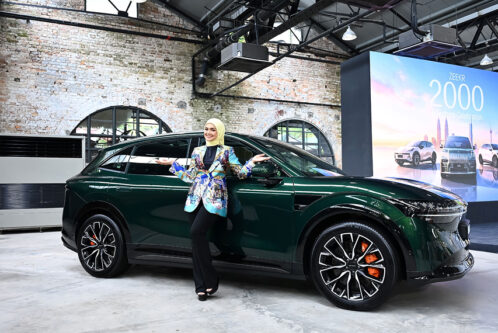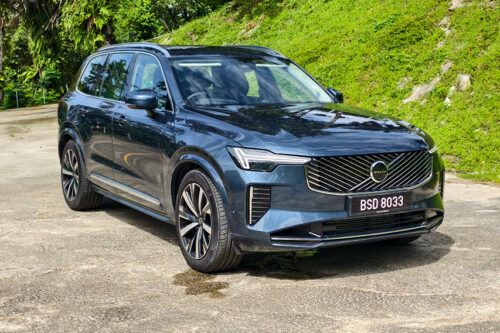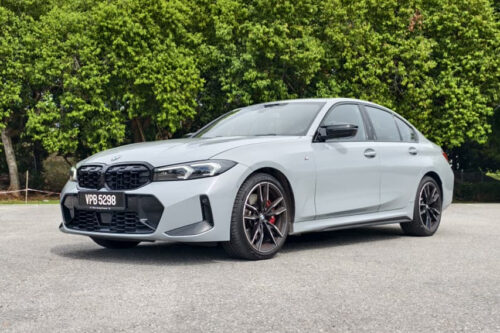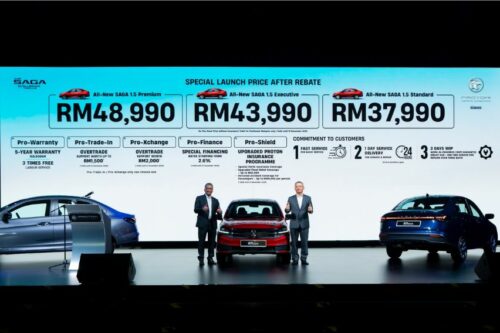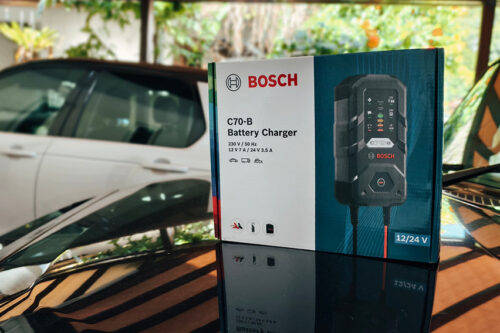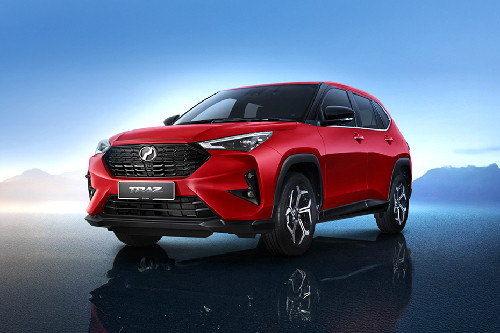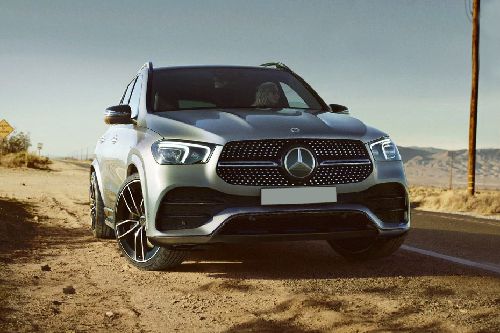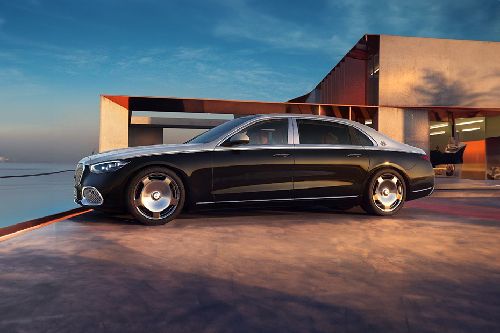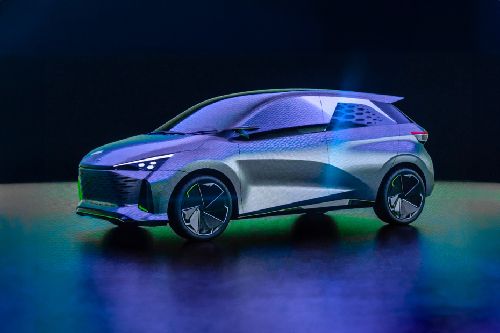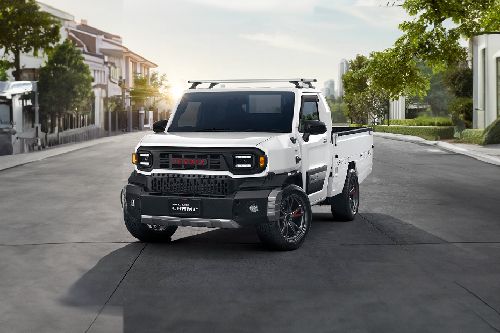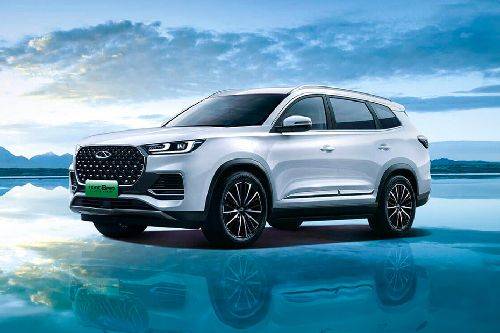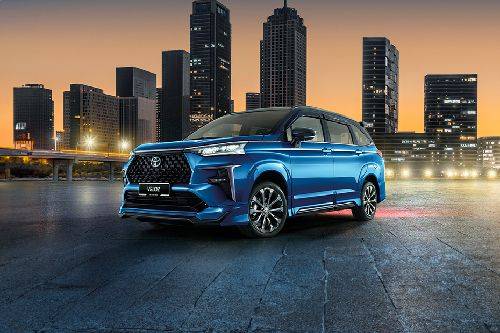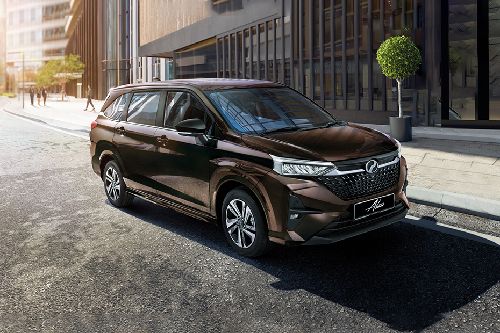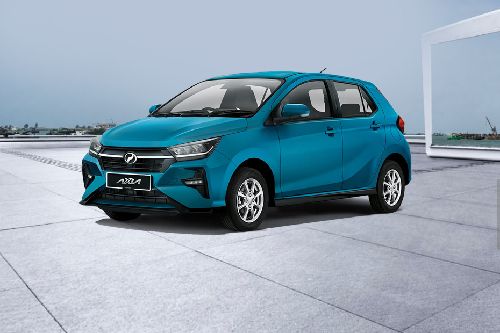Jetour Dashing first impressions review Malaysia: Stylish, spacious, and surprisingly refined
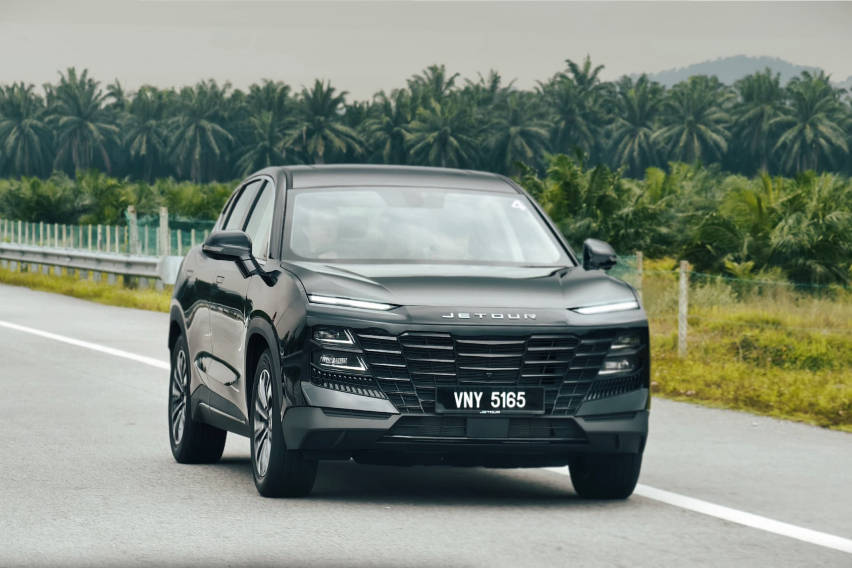
- KEY TAKEAWAYS
- Jetour: A Fresh Yet Familiar Name
- Variants and Features: Bang for Buck?
- The Looks? Loud and Proud
- Inside: Mercedes inspired, generous Space
- Under the Hood: Modest but Manageable
- Ride and Handling: Chill, Not Thrill
- Safety: Decent, But Depends on the Variant
- How Does It Stack Up?
- Final Verdict: Worth the Shot?
KUALA LUMPUR: Not too long ago, we attended the Malaysian launch of the Jetour Dashing and to be honest—we were caught off guard. In a good way.
KEY TAKEAWAYS
What is the starting price of the Jetour Dashing in Malaysia, and how many variants are offered?
The Jetour Dashing starts from RM109,800 in Malaysia and is offered in two variants: Comfort and Prime.Does the Jetour Dashing come with Autonomous Emergency Braking (AEB)?
No, Autonomous Emergency Braking (AEB) is not available on either variant of the Jetour Dashing, even the top-spec Prime.Here’s this SUV that looks like a million bucks, starts from just RM110k, and boasts what feels like solid build quality inside and out. So naturally, after the initial shock wore off, the next big question came up: How does it actually drive?
 Photo by Adam Aubrey
Photo by Adam AubreyTo find out, we joined Jetour Malaysia for a one-day media drive—and finally got to experience the Dashing in motion.
Jetour: A Fresh Yet Familiar Name
Let’s clear something up first. Jetour might sound new, but it’s no random startup. It's a sub-brand under Chery Commercial Vehicle, launched in 2018 when the global SUV craze was still in overdrive. Chery wanted something youthful, modern, and spacious—without the premium price tag. Hence, Jetour was born.
While Chery has its own core range, premium brand Exeed, edgy Omoda, and the off-road-ready Jaecoo, Jetour positions itself as the stylish and practical SUV brand for families and young buyers.
“Jet” plus “Tour,” the name hints at smooth journeys—and that’s what this C-segment SUV is promising: style, comfort, and value. And even though it’s a young brand, Jetour leans on Chery’s tech and platform expertise, so it's not exactly flying solo.
Also Read: JeTour Dashing launched in Malaysia: Two variants, from RM110k
 Photo by Adam Aubrey
Photo by Adam AubreyVariants and Features: Bang for Buck?
The Jetour Dashing comes in two trims: Comfort (RM109,800) and Prime (RM116,800).
The base Comfort gets you the essentials: 18-inch wheels, basic safety gear, leather seats, a reverse camera, 4 airbags, and no ADAS.
But spend that extra RM7,000 for the Prime, and it’s a whole different story—19-inch alloys, panoramic sunroof, 6 speakers, 360-degree camera, powered front seats, and a basic ADAS suite that includes lane change warning, blind spot monitoring, and a 180-degree transparent underbody camera view.
The biggest letdown? No Autonomous Emergency Braking (AEB) even on the Prime variant. A bit of a miss in 2025.
 Photo by Adam Aubrey
Photo by Adam AubreyThe Looks? Loud and Proud
Let’s be honest—one of the Jetour Dashing’s biggest flexes is its styling. That front end? Impossible to ignore, with clear shades of Lamborghini Urus in its wide, imposing stance.
The rear? Equally polished, with hints of Lexus in its sculpted lights and sporty finish. Details like the flush pop-out door handles and the cleverly hidden door grips add a layer of refinement that’s rare at this price point.
And there’s a reason for that level of design maturity—the Dashing was styled by former Porsche designer Hakan Saracoglu. Can you tell? Absolutely. Just ask the curious crowd that gathered around it before our media drive.
When we casually asked them to guess the price, most threw out numbers between RM150k and RM170k. That alone says a lot. Whatever your opinion of the badge, the Dashing nails the “premium look” on first impression—and convincingly so.
 Photo by Adam Aubrey
Photo by Adam AubreyInside: Mercedes inspired, generous Space
Step inside and you’ll see why Jetour claims the Dashing is inspired by “oriental living layouts fused with meta-aesthetic design principles.” Whatever that means.
What we see is a clean, premium-feeling interior. There are shades of Mercedes-Benz here—particularly the steering wheel design and the split-opening centre console.
 Photo by Adam Aubrey
Photo by Adam AubreyThe dashboard houses two 10.25-inch screens, and the overall layout is sleek and cohesive. Build quality feels decent, with minimal rattles or cheap-feeling trim during our time with the car.
Front seats are sporty and comfortable for most—though a few in our media group found them a bit too snug. The rear seats? Pretty great. There’s loads of legroom and headroom, plus a flat floor that gives rear passengers more foot space.
Relaxing in the back almost feels like you're on a recliner. Though some felt the Proton X70 was roomier, the Dashing's rear bench is arguably the highlight of the cabin.
And if you're eyeing utility, that funky little door storage bin is a neat touch—big enough to hide an umbrella or water bottle.
 Photo by Adam Aubrey
Photo by Adam AubreyUnder the Hood: Modest but Manageable
The Jetour Dashing is powered by a 1.5-litre turbocharged four-cylinder engine producing 156 PS and 230 Nm, paired to a 6-speed dual-clutch transmission.
If that engine spec rings a bell, it’s because representatives from Jetour Malaysia confirmed that it shares its platform with the Chery Tiggo 7, with the Omoda 5’s engine—but gets a transmission.
Is it fast? Not really. But for daily use, it’s adequate. In fact, when you're cruising on the highway, it feels pretty composed. Overtaking isn't a struggle, though it doesn't have the urgency of rivals like the Honda CR-V or even the Proton X70.
Even though the Dashing is powered by a turbocharged engine, it doesn’t give you that typical “turbo kick” you might expect. Instead, power delivery feels more like a naturally aspirated engine—smooth and linear as it builds up speed through the gears.
That said, throttle response takes a bit of getting used to. In stop-and-go traffic, the car can feel a little jerky, and the 6-speed dual-clutch transmission (DCT) shows some hesitation at low speeds—it’s not the smoothest when crawling or creeping forward in jams.
But once you're cruising, everything settles down nicely. The shifts become smoother, and the driving experience feels more refined. In my view, drivers who are already familiar with how DCTs behave—like easing off the throttle slightly during low-speed gear changes—will adapt quickly.
For those who’ve only driven conventional automatics or CVTs, it just takes a bit of time to get used to the quirks.
No, it’s not going to give you hair-raising acceleration—but for most daily driving scenarios, it’s more than capable.
 Photo by Adam Aubrey
Photo by Adam AubreyWhat about fuel efficiency?
During our test drive, we recorded an average of 12.5 litres per 100 km, which puts it in the same ballpark as something like the Honda HR-V Turbo in real-world conditions.
Now, this wasn't a city crawl or stop-and-go urban slog. In fact, most of our drive took place outside the city—on open roads, winding stretches, and a bit of countryside cruising.
That figure might seem on the higher side considering we weren’t battling city traffic, but there’s a catch. Our car was loaded with fellow media members—petrolheads, no less—and that meant we weren’t exactly driving like we were trying to save fuel.
There were frequent throttle prods, quick overtakes, and the occasional testing of the DCT’s responsiveness, just to see what the Dashing was capable of.
So, while 12.5L/100km might not scream efficiency, it’s actually a fair result given the spirited pace and fully loaded cabin. With a lighter foot and fewer passengers, we suspect it could dip closer to the 10L/100km range, especially on longer highway drives at cruising speeds.
In short: not exactly frugal, but understandable given the conditions. For the average driver doing a mix of weekend trips and light-footed commutes, fuel economy should be perfectly manageable.
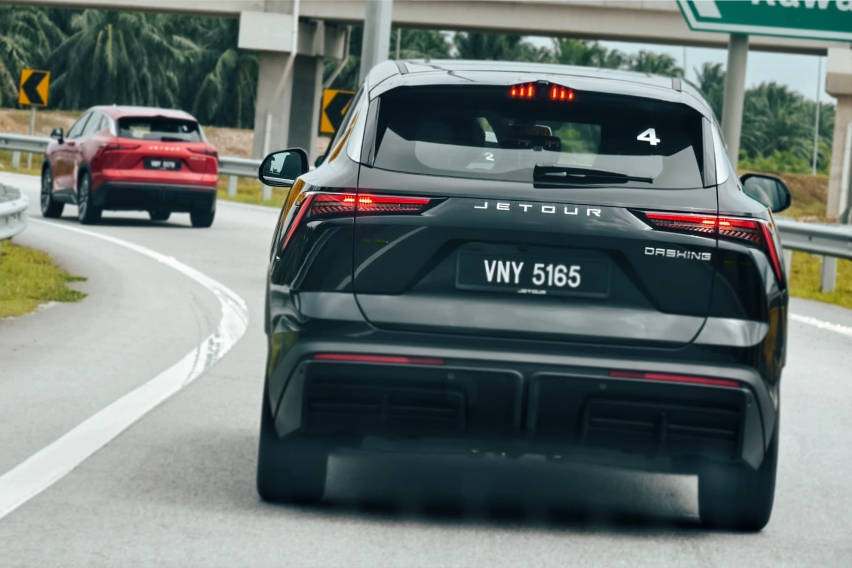 Photo by Adam Aubrey
Photo by Adam AubreyRide and Handling: Chill, Not Thrill
Surprisingly well, especially for something priced so competitively. The Jetour Dashing uses a MacPherson strut suspension up front and a multi-link setup at the rear—just like the more expensive Proton X70.
That’s a notable plus at this price point, considering many rivals in the same bracket often make do with a simpler (and less comfortable) torsion beam rear.
On the road, the Dashing strikes a respectable balance between comfort and control. It doesn’t float over bumps like a luxury SUV, but it’s far from harsh.
Potholes, road patches, and expansion joints are soaked up well enough, with minimal jarring through the cabin. You feel the road, sure—but never in a way that’s tiring or annoying. It’s tuned more towards comfort, which suits the car’s character perfectly.
The steering is light and easy-going—great for navigating tight city streets or parking in cramped lots. It doesn’t offer much in the way of feedback, though, so if you’re hoping for sporty steering feel or connection with the front wheels, this won’t quite scratch that itch.
Still, flick it into Sport mode and things do change slightly. The throttle sharpens up, the steering weights up just enough to feel more direct, and the DCT becomes a little more responsive. Being driving enthusiasts, we naturally preferred leaving it in Sport most of the time—it gives the Dashing a bit more urgency without compromising comfort.
As for handling, it’s more composed than playful. The body remains settled in corners, and it tracks straight on highways without needing constant corrections. It’s not meant for aggressive driving or fast-paced backroad blasts, but it holds its own in everyday situations—school runs, mall outings, family road trips, and the occasional winding hill road.
But what really surprised us was the refinement—especially in terms of NVH (Noise, Vibration, and Harshness). We were honestly expecting it to feel a little rough around the edges, given that this is still a relatively new brand entering our market. But no, Jetour has done a good job here.
The cabin is impressively quiet, even at higher speeds. Road noise is well-dampened, wind noise is minimal, and vibrations are barely noticeable, even when idling or accelerating briskly. It feels more refined than you’d expect from something that costs just a bit over RM100k.
In fact, the serenity in the cabin, combined with the relaxed ride and comfortable seating, gives the Dashing a near-premium vibe when you're behind the wheel. It won’t blow you away with performance or sportiness,
 Photo by Adam Aubrey
Photo by Adam AubreySafety: Decent, But Depends on the Variant
IIn terms of safety, the Jetour Dashing Comfort variant comes equipped with four airbags, along with essential safety features like ABS, EBD, Brake Assist, Electronic Stability Control, and Traction Control.
It also includes reverse sensors and a reverse camera to assist with parking, while passive cruise control adds some driving convenience. For families, ISOFIX child seat anchors are provided, along with a tyre pressure monitoring system (TPMS) and an over-speed warning to help keep things in check on the road.
Moving up to the Prime variant unlocks a much more complete safety suite. It adds two curtain airbags, bringing the total to six, and introduces several very basic advanced driver assistance features.
These include Lane Change Warning, Blind Spot Monitoring, Rear Cross Traffic Alert, and a 360-degree camera system with a see-through underbody view—useful when navigating tight or tricky terrain.
That said, one major omission stands out across both variants: there's no Autonomous Emergency Braking (AEB). In 2025, that’s a feature we expect to see even in budget-friendly models, so its absence here is disappointing.
Still, considering the price point, the Prime variant does offer respectable coverage overall, especially for drivers looking for a well-rounded safety package without stretching the budget.
 Photo by Adam Aubrey
Photo by Adam AubreyHow Does It Stack Up?
Let’s face it—the Jetour Dashing isn’t just battling spec sheets and equipment lists. It’s fighting for trust in a market dominated by well-established names. Its main rivals include the Proton X70, Honda CR-V, Toyota Corolla Cross, and Jaecoo J7—all familiar models with strong reputations and proven track records among Malaysian buyers.
Take the Proton X70 Standard variant, for instance. It’s priced around RM10,000 less than the Dashing Comfort, yet offers a more powerful engine, more transmission gears, and a more comprehensive safety package straight out of the gate.
That gives it a solid edge on paper. However that basic Proton X70 comes with fabric seats, non powered tailgate, non powered driver seats, which the base spec Dashing has.
But specs aside, the X70 also presents itself as the mature, dependable older sibling—seasoned, familiar, and safe. The Jetour Dashing, in contrast, is like the stylish cousin who just got back from studying overseas.
They’re fresh-faced, well-dressed, full of charm, but still learning the ropes and figuring out how to fit in. It’s a clash between familiarity and novelty, tradition and bold new design—and depending on what you value more, either could make a strong case.
 Photo by Adam Aubrey
Photo by Adam AubreyFinal Verdict: Worth the Shot?
So who is the Jetour Dashing for?
If you’re after an affordable, stylish C-segment SUV that stands out from the crowd, and you don’t mind giving a new brand a shot, it’s definitely worth checking out.
It’s not perfect—the drivetrain could be more powerful, and the lack of AEB is hard to ignore. But as a package? It’s compelling.
This is an SUV for those who appreciate design, want a spacious and comfortable cabin, and don’t necessarily need blazing speed or ultra-sporty handling.
And for under RM117k for the top spec model? That’s a solid offer.
The real question is—are Malaysians ready to trust a fresh face like Jetour? Or will they stick with the usual suspects?
Let us know what you think in the comments. Would you give the Jetour Dashing a chance?
Also Read: First shipment of Jetour Dashing arrives in Malaysia; launch imminent
Malaysia Autoshow
Trending & Fresh Updates
- Latest
- Popular
You might also be interested in
- News
- Featured Stories
Featured Cars
- Latest
- Upcoming
- Popular
Latest Car Videos on Zigwheels







